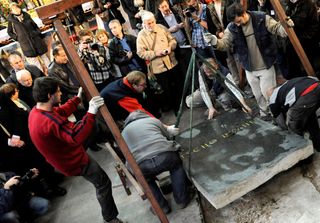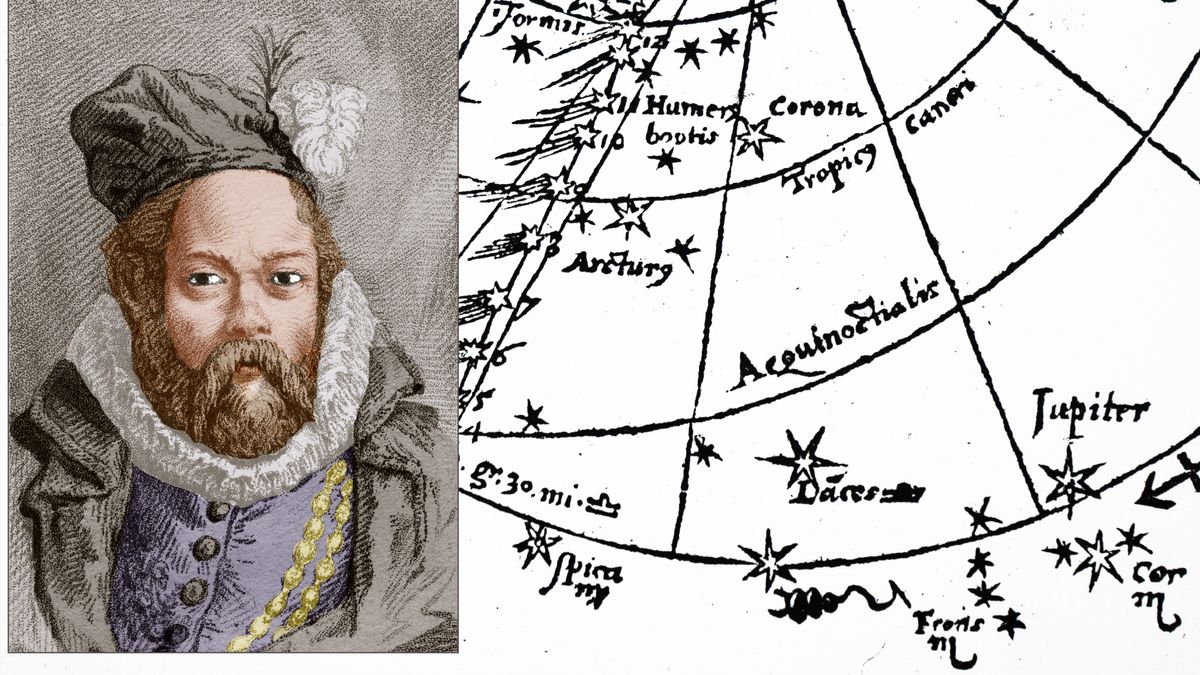A chemical mystery lurks in the laboratory of Tycho Brahe, one of the most famous astronomers of all time.
Tycho Brahe (1546-1603) was a pioneering Danish astronomy instruments enthusiast in the decades before the telescope was used for peering at the sky. Aside from that and a big supernova discovery, Brahe also experimented with alchemy, which was a common practice of the Renaissance. Brahe attempted to make alchemical medicines while other scientists tried, unsuccessfully as it turned out, to transform base elements into gold.
New analyses of pottery and glass shards excavated from Brahe’s lab, between 1988 and 1990, uncovered the popular alchemical ingredients of gold and mercury. The study also found common elements of nickel, copper and zinc. The big surprise, however, was the discovery of tungsten; the rare metal was first isolated by Swedish chemist Carl Wilhelm Scheele in 1781, nearly two centuries after Brahe’s death, according to the University of Southern Denmark.
Brahe’s approach to experimentation, whether in the lab or when gazing at the sky, was pioneering for its day and later taken up by illustrious astronomical figures such as Isaac Newton (1642-1727). Alchemy and astronomy were intrinsically linked for decades, according to the U.K.’s Science Museum Group.
To be sure, magical arts were also part of these scientists’ rationale, but there was also a desire to “discover the hidden workings of nature,” assistant curator Katie Crowson wrote in the museum group post.
“This empirical approach was adopted by figures associated with the scientific revolution, a period of drastic change in scientific thought in the sixteenth and seventeenth centuries which transformed attitudes to the natural world,” Crowson added.
Related: Famous astronomers: How these scientists shaped astronomy
Whether the tungsten was a deliberate act of Brahe’s chemistry is not clear. Hints of tungsten’s existence were known in Brahe’s time. It is slightly possible that Brahe had knowledge: in the early 1500s, Georgius Agricola found an oddity, which we now know is tungsten, in tin ore from German state Saxony. (Back then, Saxony was a territory of the Holy Roman Empire, whose vast holdings included Brahe’s Denmark and Agricola’s location in today’s Germany.)
The substance, which Agricola and others called “Wolfram” (“Wolf’s froth” in German), caused difficulties when the mineralogist attempted to smelt or extract tin from the ore.
“Maybe Tycho Brahe had heard about this and thus knew of tungsten’s existence,” stated study lead author Kaare Lund Rasmussen, who is with the University of Denmark as a professor emeritus specializing in a branch of archaeology known as archaeometry.
Rasmussen emphasized that we can’t say for sure, however, if Brahe meant to use tungsten. “This is not something we know or can say based on the analyses I have done. It is merely a possible theoretical explanation for why we find tungsten in the samples.”

Brahe’s medicinal alchemy addressed ailments such as plague. Recipes were seen as protected information at the time, and only a few people — such as his patron and funder, Holy Roman Emperor Rudolph II — may have received the prescriptions Brahe created.
The researchers suggested that Brahe’s “plague medicine” or theriac (a drug mixture) may have had up to 60 ingredients, including substances like opium, snake flesh and copper, and various herbs and oils.
Brahe created at least three recipes to counteract plague; while tungsten was found in the lab, its presence (as well as other elements not proven in reconstructed recipes) “is not a proof that they were indeed used for making Brahe’s medicine,” the researchers cautioned in the study published July 25 in the journal Heritage Science.
Besides the sheer value of experimentation, there is another link between astronomy and alchemy: Brahe expressed confidence in “connections between the heavenly bodies, earthly substances, and the body’s organs,” study co-author Poul Grinder-Hansen, a curator at the National Museum of Denmark, said in the same statement.
For example, Brahe held that “the sun, gold, and the heart were connected, and the same applied to the moon, silver, and the brain.” This worldview, since disproven, encouraged Brahe to experiment on himself; a previous study that included Rasmussen found gold and other elements in Brahe’s hair and bones.














/https://tf-cmsv2-smithsonianmag-media.s3.amazonaws.com/filer_public/d1/82/d18228f6-d319-4525-bb18-78b829f0791f/mammalevolution_web.jpg)





Discussion about this post